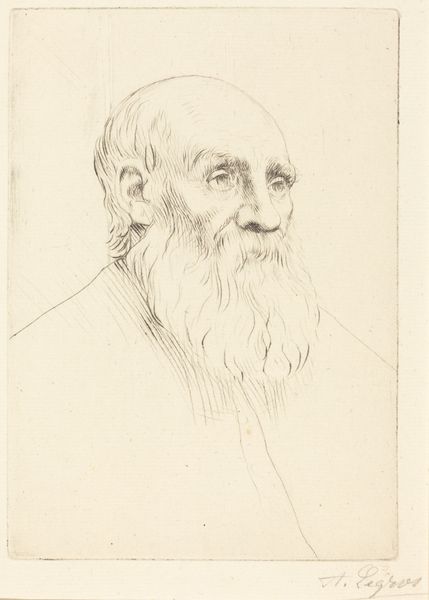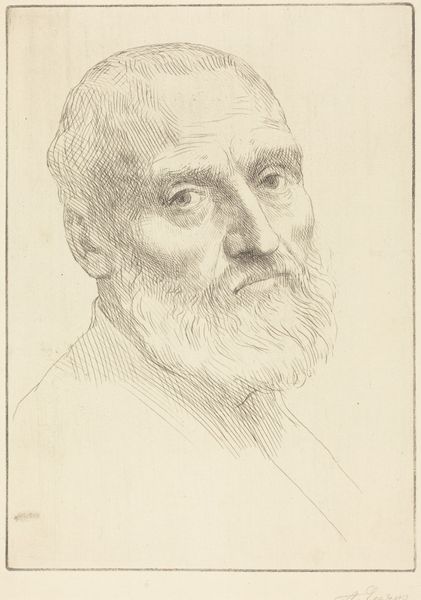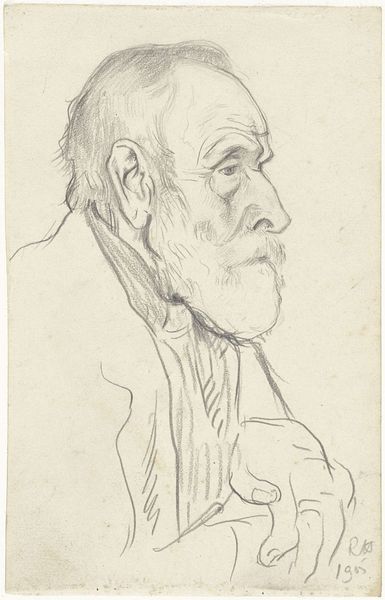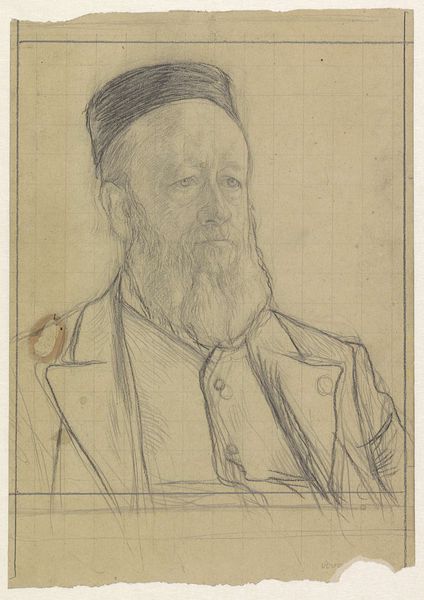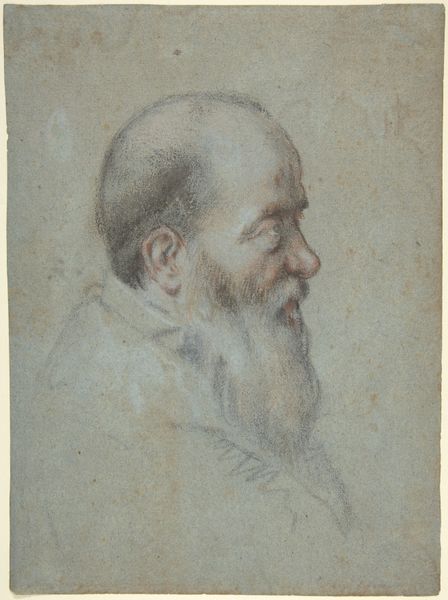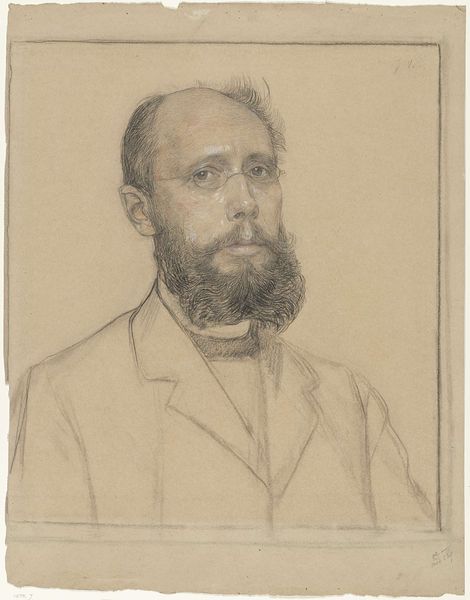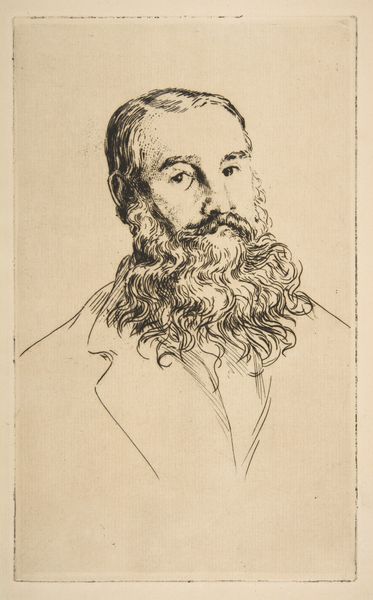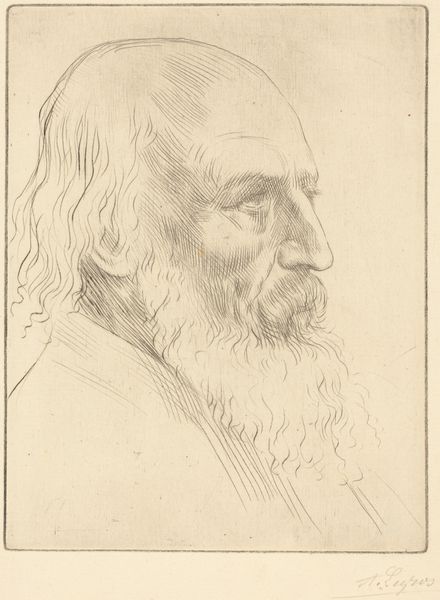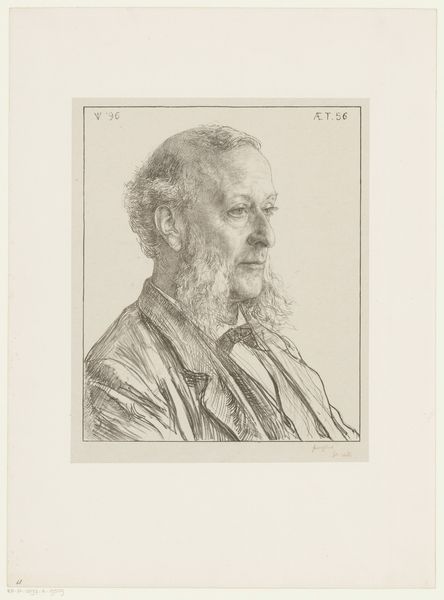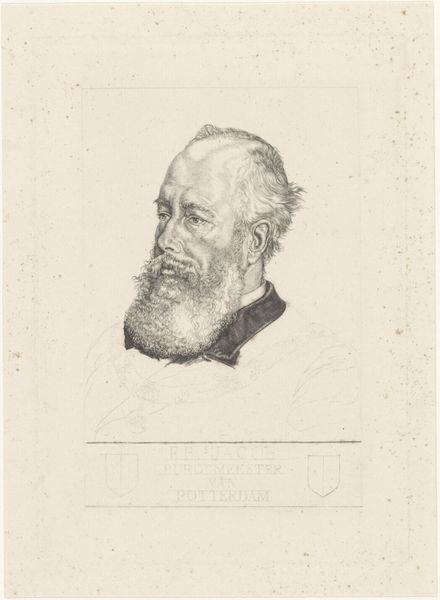
drawing, pencil, charcoal
#
portrait
#
drawing
#
charcoal drawing
#
pencil drawing
#
pencil
#
charcoal
#
academic-art
#
realism
Dimensions: height 625 mm, width 478 mm
Copyright: Rijks Museum: Open Domain
Curator: Welcome to the Rijksmuseum. Today, we're looking at Jan Veth's "Portret van een eierboer uit Broek," a drawing believed to be from between 1874 and 1925. It is made from charcoal and pencil. Editor: The immediate feeling is of quiet dignity. Look at the soft blending, the limited tonal range—it creates an atmosphere of contemplative stillness. Curator: Veth truly captures the play of light on the face. It is masterfully rendered, but what interests me are the materials employed. Think about where charcoal and pencil originate—natural sources reduced to implements. Editor: A direct translation of nature onto paper, quite literally. Note the artist’s technique, though: see how the blending softens and almost erases harsh lines, presenting not pure realism but something more evocative of inner character. Curator: Yes, and that relates to Broek's social context as well. Here, Veth depicts a tradesman. These workers built the Netherlands as much as any member of Government. How did the artist's social position shape his choice of subject and material? What impact would have availability of such common and yet expressive media like charcoal had on portraiture as an increasingly widespread practice? Editor: We might see the very lack of lavishness here, materially speaking, as integral to its meaning. Veth makes aesthetic choices by paring down the palette, emphasizing line and form in a way that removes distraction. There’s something universal communicated about aging, thoughtfulness, the weight of lived experience distilled through careful observation. Curator: Absolutely. Consider the artistic labor and the cost involved even in producing a drawing versus a full oil painting in terms of social and financial access. Perhaps this more democratic medium provided wider exposure for different groups of people to have access to art and the status it implies. Editor: It is powerful how much can be conveyed through these seemingly simple means. We are able to grasp essential character qualities of this sitter. The gaze of this Broek tradesman, framed within soft pencil, lingers far longer than you might initially suspect. Curator: The interplay between materials and sitter in Veth's portrait certainly offer compelling avenues for deeper understanding and contemplation of Dutch history. Editor: Indeed, there is real artistry here to contemplate with time and repeated looks. Thank you for joining us.
Comments
No comments
Be the first to comment and join the conversation on the ultimate creative platform.
